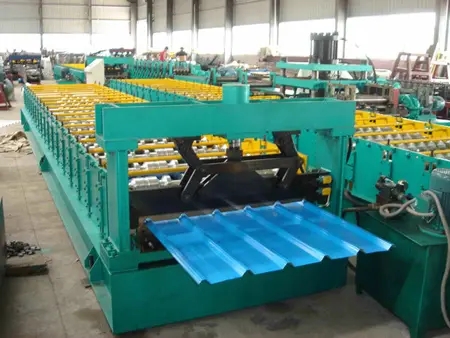
Understanding the Carbon Steel Welded Pipe Making Machine
The carbon steel welded pipe making machine plays a crucial role in the manufacturing of welded pipes that are essential across various industries, including construction, automotive, and oil and gas. These machines are specifically designed to efficiently produce high-quality steel pipes that meet strict industry standards.
The Process of Pipe Manufacturing
The process begins with the selection of raw materials, primarily carbon steel coils. These coils are prepared and fed into the machine, where a series of rollers and components work in tandem to shape, weld, and cut the steel into usable pipe lengths. The fundamental principles behind the operation of a carbon steel welded pipe making machine involve several key stages forming, welding, sizing, and cutting.
1. Forming Initially, the flat steel coils are uncoiled and passed through a series of rollers that shape the metal into a tubular form. Depending on the design of the machine, the forming process can either involve a round or square pipe configuration.
2. Welding Once the steel is formed into a semi-tube, the next critical step is welding. This process often employs high-frequency induction welding or submerged arc welding techniques. High-frequency welding is widely favored for its speed and efficiency, quickly joining the edges of the steel pipe together. The welding process needs to maintain high precision to ensure structural integrity and adherence to safety standards.
3. Sizing After welding, the pipe undergoes a sizing process to achieve the desired diameter and wall thickness. This stage is crucial as it significantly impacts the end product's performance characteristics. Rollers adjust the dimensions of the pipe while ensuring that any weld bead excess is smoothed out.
4. Cutting The final stage involves cutting the welded pipe into specified lengths, which are determined by customer requirements or specific project needs. Automated cutting machines often synchronize with the production line to maintain efficiency.

Advantages of Carbon Steel Welded Pipes
The welded pipes manufactured from carbon steel have several advantages over their seamless counterparts. They typically have a lower production cost, which translates to more competitive pricing in the market. Furthermore, welded pipes offer flexibility in terms of diameters and wall thickness, allowing for customization based on specific applications.
Additionally, carbon steel has excellent mechanical properties, including strength and toughness, which make it suitable for various environments, from high-pressure systems to corrosive settings when properly coated. The ability of welded pipes to be easily joined makes them a popular choice for construction projects, as they can be assembled or disassembled with greater ease.
Innovations in Welding Technology
As technology evolves, so does the capability of carbon steel welded pipe making machines. Innovations in welding techniques, automation, and quality control are continually enhancing the production process. Modern machines are equipped with advanced sensors and monitoring systems that ensure seamless quality checks throughout production, thus reducing the occurrence of defects.
Conclusion
In conclusion, the carbon steel welded pipe making machine is a pivotal piece of equipment in the manufacturing industry. Its role in producing high-quality welded pipes cannot be overstated, as these pipes form the backbone of critical infrastructure across multiple sectors. With ongoing investments in technology and innovation, the future of pipe manufacturing looks promising, providing further enhancements in efficiency, quality, and adaptability to meet the ever-changing demands of the market. As industries grow, the reliance on robust, reliable carbon steel welded pipes will undoubtedly continue to expand, making these machines indispensable assets to manufacturers worldwide.